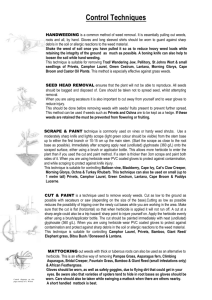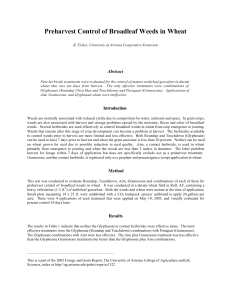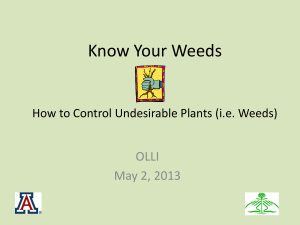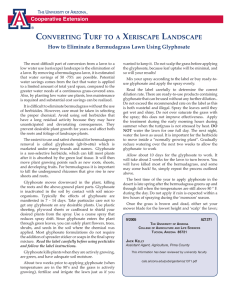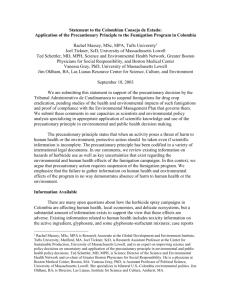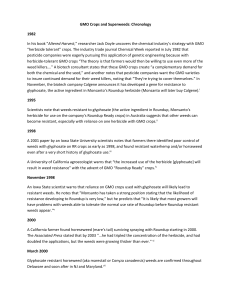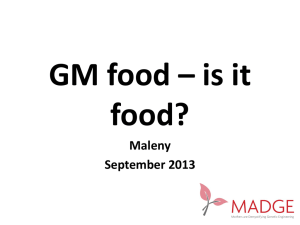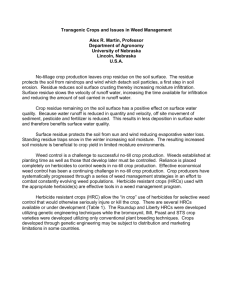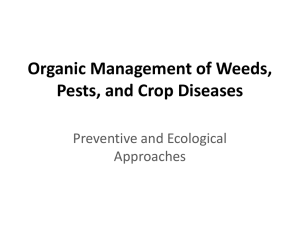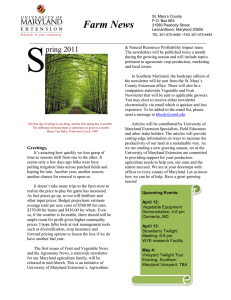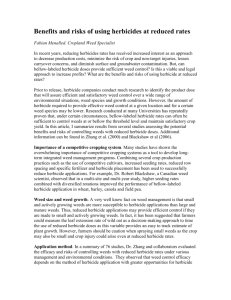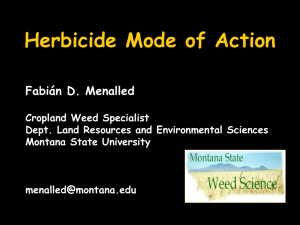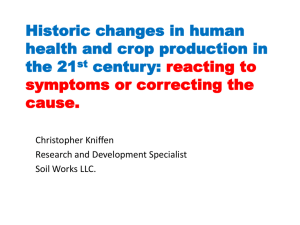44-Mueller-EWRS Santorini 09 slides
advertisement
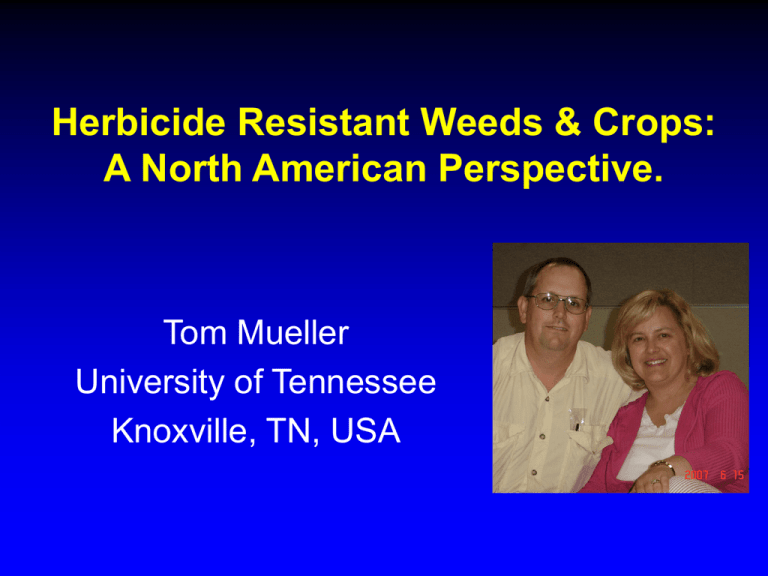
Herbicide Resistant Weeds & Crops: A North American Perspective. Tom Mueller University of Tennessee Knoxville, TN, USA Overview of presentation • Herbicide resistant crops – How widespread? – Effect on weed control – Effect on development of herbicide resistance • Herbicide resistant weeds – Occurrence – Effect on farmers • My Perspective…. My perspective • Herbicide tolerant crops can be an emotional issue • If one wants to see a problem, one will see one • If one does not want to see a problem, one will not see one • As is often the case, we only see what we want to see….. Defining a few terms • Herbicide Resistant Crop – Genetically Modified Organisms (GMOs) – Transgenic • Herbicide Resistance = – Inherited ability of a weed population to survive and reproduce after exposure to a herbicide dose (rate) that would control an unselected (sensitive) population Glyphosate Tolerant Crops • RoundupReady (RR) varieties now common in USA – Soybean (>90%) – Cotton (70%) – Corn (~50%, still increasing) – Canola (not a US crop, but in Canada) • Mainly Monsanto Ag Products Why do US farmers like RR? • The System works!! – Kills many weeds, both small and large – Crop safety, can have overlaps – Safe to people spraying (glyphosate is not toxic) • Monsanto owns seed companies…. • System is simple – One chemical… very easy Other types of HT crops • LibertyLink Crops (Bayer) – Tolerant to glufosinate – Canola – Corn, soybeans • Some very promising lines Some resistance to GMOs • In practice, the United States has conducted a large-scale feeding trial • ~300 million US citizens have consumed GMO crops for ~ 12 years. • No negative dietary effects • None… • There is no toxicological reason not to allow GMO crops to be used. Herbicide Resistant Weeds • Weeds have been adapting to herbicide use for many years • Selection pressure allows for survivors to make seed and fill that open niche (Conyza canadensis) (Amaranthus palmerii) Distribution of HR weeds • More prevalent where glyphosate continually used • Cotton/soybean farms • Southeastern United States Two main weedy species • Conyza canadensis – Winter annual • Amaranthus palmerii – Summer annual Conyza canadensis • Very widespread – Several million hectares infested • Only a problem in no-tillage systems • Farmers using additional chemicals – 2,4-D/dicamba + flumioxizan prior to planting (Conyza canadensis) Photo credit: Chism Craig Conyza canadensis Resistant to glyphosate in TN • Wind-blown seed • Need more herbicides • Need more tillage Photo courtesy of Chism Craig Amaranthus palmerii • • • • Dioecious summer annual Prolific seed producer Can grow 2.5 cm/day in summer Greatly reduces crop yield Cotton field 2004 0.8 kg ae/ha glyphosate 14 DAA West Tennessee 2008 4 kg/ha glyphosate in 1st spray 3 kg/ha glyphosate applied in 2nd application HR Weeds effect on Farmers • Use more herbicides • In extreme cases, hire people to hoe the fields • Still using RR crop varieties Other areas • • • • Canada, upper midwest US Minimal glyphosate Resistance problems No GMO wheat GMO canola has several modes of action – 50% RR, 30% LL, 15% Imi, 5% non HT – Can rotate between alternate modes of action • Other weeds have developed resistance – ACCase or ALS resistance Over the larger area • “Most” farmers have no “major” weed resistance problems • More farmers will have HR weeds in the next few years • As RR corn use increases, will see more HR problems The most common problem • RR corn “volunteers” in soybeans • A RR crop (corn) becomes a weed in a different RR crop (soybeans) Do you see RR corn plants? Final thoughts • HT crops widely used • Few HR weeds, but more each year • Once a farmer gets them, is a major problem One sees what one wants to see….. Questions?? • Canada

